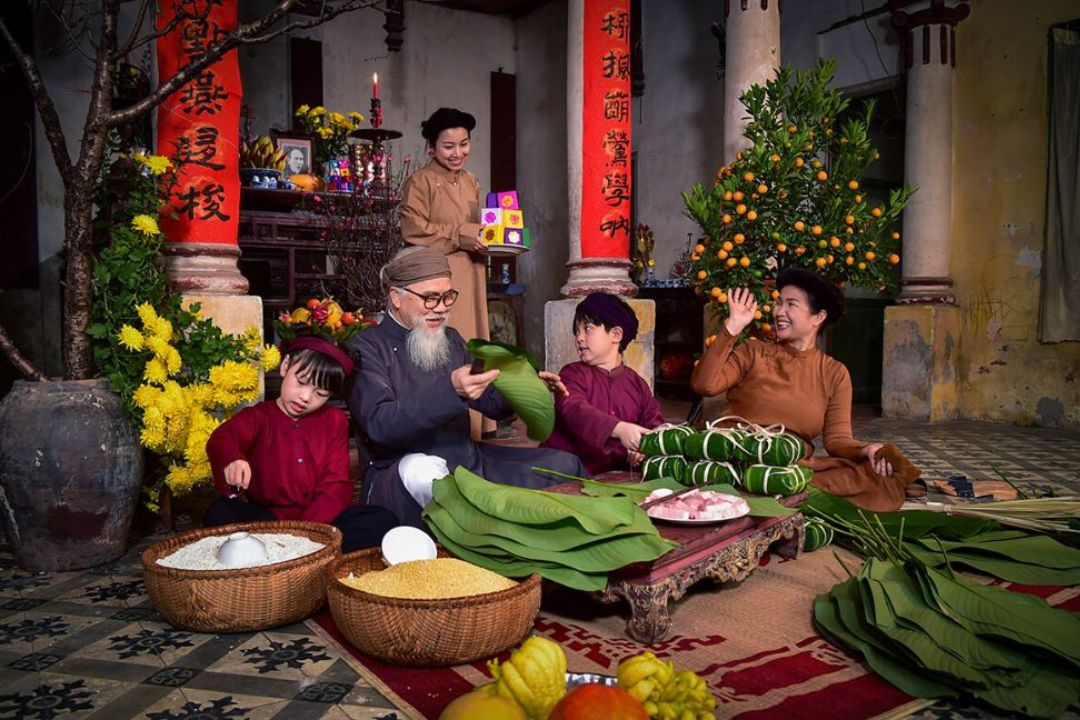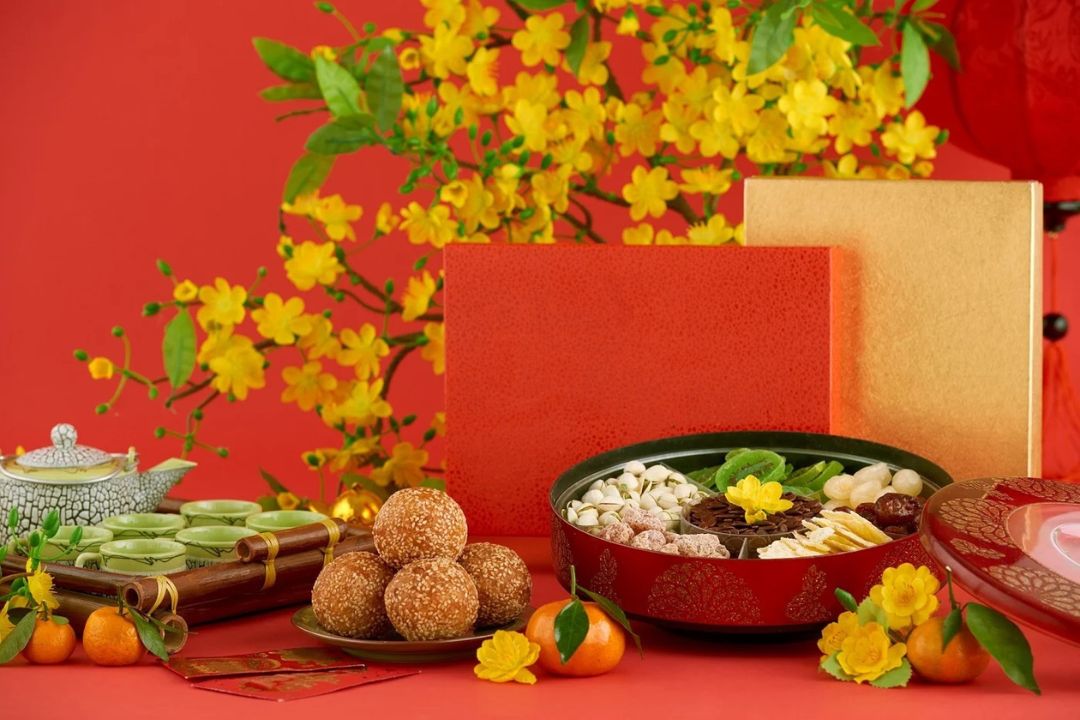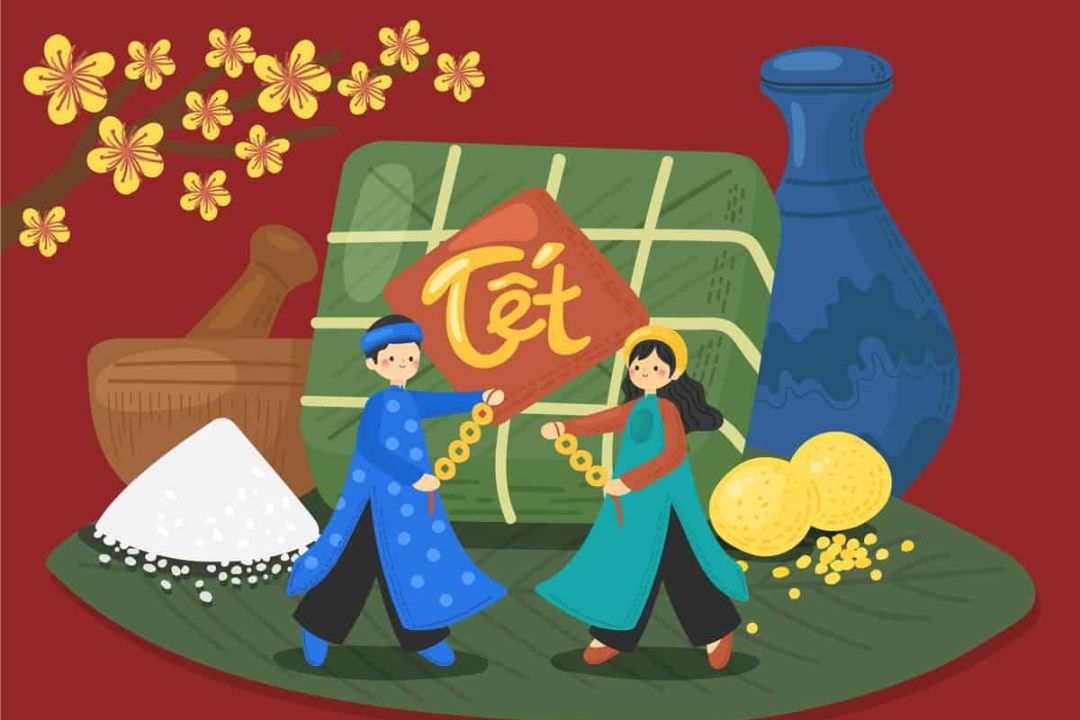Tet, or the Lunar New Year, is a celebration in Vietnam marking the transition from the old year to the new. Although the actual moment of transition between years is just a few minutes, the Vietnamese people celebrate Tet for many days. In the past, Tet festivities could extend from the twelfth month to the end of the third lunar month.
What day is Lunar New Year?
In modern times, the duration of Tet celebrations in Vietnam has shortened, typically lasting around 7 to 10 days. Some regions still observe the traditional Tet for a longer period, extending to half a month or slightly more. Beyond bidding farewell to the old year and welcoming the new one, Tet carries significant meanings of family reunion, joyous gatherings, and unity among the Vietnamese.
During the Tet period, Vietnamese people, no matter how far they are from home, make an effort to return to their hometowns to reunite with family and welcome the new year together. Subsequently, during the Tet days, people set aside work to relax, enjoy festivities, and exchange New Year’s greetings. Numerous festivals are organized during the traditional Tet period, reflecting the distinctive characteristics of each locality.

In addition to being a time for bidding farewell to the old year and welcoming the new, Tet is an occasion for expressing gratitude to Heaven, deities, and filial piety toward ancestors who have passed away. Therefore, during this festive season, the Vietnamese engage in various rituals and customs, depending on their religious beliefs and traditions.
Furthermore, Tet serves as an opportunity for people to cast away worries, failures, and anxieties of the past year, and to embrace hope and trust in a more fortunate and successful new year. With all these meanings, the Vietnamese meticulously prepare for Tet, decorating their homes beautifully, cooking delicious dishes, and observing traditional customs to seek good fortune.
Traditional Tet celebrations in Vietnam last for at least 7 days, and thus, the festival is divided into different stages:
Stage 1: Preparing for Tet
This stage usually lasts from the 22nd to the 30th day of the lunar calendar. During this period, Vietnamese people clean their homes, discard old or unused items, repaint their houses to make them look new, and decorate with plants and fresh flowers. The stage includes a ceremony to bid farewell to the Kitchen God, who is believed to bring peace to households.
Each year, before ascending to Heaven, the Kitchen God reports the family’s situation to the Jade Emperor. To prepare for this, many Vietnamese perform a ceremony to honor the Kitchen God before he leaves. Additionally, during the preparation stage, Vietnamese people make traditional Tet foods such as square sticky rice cakes (banh chung), cylindrical glutinous rice cakes (banh tet), and various Tet jams and cakes.

These foods are consumed during Tet, and after New Year’s Eve, they are seldom made, as they are designed to last for an extended period. During these days, people also exchange Tet gifts, which can be store-bought or homemade. The custom of giving Tet gifts is a way for the Vietnamese to express affection and mutual goodwill.
New Year’s Eve parties are also organized during this stage. These gatherings involve the host preparing delicious dishes and inviting relatives, friends, and neighbors to enjoy a joyful feast. People engage in conversations about the events of the past year and discuss plans and resolutions for the coming year.
Stage 2: Tet Nguyen Dan (Lunar New Year)
This stage begins from the moment of New Year’s Eve and lasts at least until the 6th day of the lunar new year. On New Year’s Eve (from midnight of the 30th to 1 am of the 1st day of the lunar calendar), Vietnamese people joyfully welcome the new year. Some perform ceremonies to welcome the new year, while others go to watch fireworks, visit churches or temples, or gather at crowded public places to celebrate together.
Entering the first days of the new year, the Vietnamese observe many customs and taboos to avoid bad luck and seek good fortune. For instance, people try not to utter negative words or discuss unfortunate matters. Instead, they speak gently and share positive and cheerful stories to wish for a happy new year.

There are various other customs to follow during these days, such as refraining from sweeping the house or taking out the trash, avoiding breaking items, not borrowing or lending money, not giving fire or water to others, not picking up money from the ground, and avoiding certain foods like dog or cat meat, duck meat, and shrimp to prevent bad luck. These precautions are taken in the first days of the new year.
According to tradition, on the 1st day of Tet, Vietnamese people visit and wish Tet to grandparents, parents, and relatives from the paternal side. On the 2nd day, they visit relatives from the maternal side. On the 3rd day, they extend Tet wishes to teachers who have taught them. From the 4th day onward, people start visiting friends, colleagues, or leisurely travel more freely.
During this stage of Traditional Tet, the Vietnamese engage in various activities to bring luck, happiness, and prosperity for the new year. These activities include picking lucky plants, moving to a new home on an auspicious day, opening a business, and giving and receiving lucky money (li xi) or birthday congratulations. In the past, people usually celebrated Tet in their hometowns, but nowadays, with less emphasis on traditional customs, many Vietnamese choose to travel to distant places during Tet, taking advantage of the extended holiday for private relaxation. This could involve visiting popular tourist destinations within the country or abroad. Since the traditional Tet holiday typically lasts at least 7 days, it is a rare opportunity for families to enjoy an extended vacation together.
Stage 3: Ending Tet
This is the shortest stage of Traditional Tet, and its duration varies among families and regions. It starts from the last day of stage 2, which is after the Tet celebrations. Vietnamese people perform a ceremony to burn offerings (ending Tet), clean their homes, remove plants and decorations, and rearrange their belongings to return to normalcy.
Afterward, people resume their work and daily lives. Many of the customs and taboos are no longer observed. Festivals come to an end, and those who traveled for work return to their workplaces, leaving their hometowns.
In conclusion, Traditional Tet is a sacred and significant festival for the Vietnamese people. Besides Vietnam, some other Asian countries also celebrate a traditional New Year around the end of the year, such as China, South Korea, Singapore, and more.
